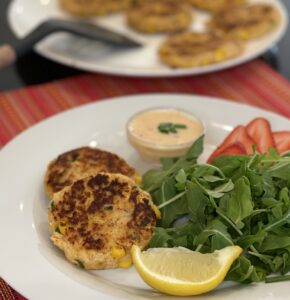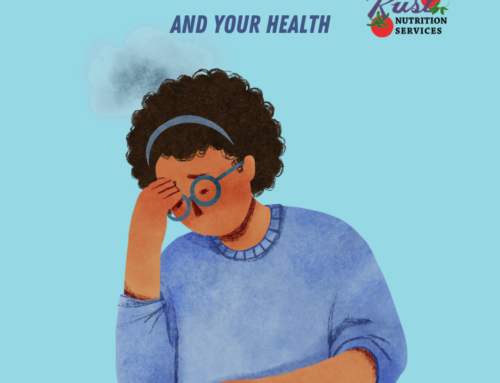February is heart month, but you want to care for your heart all year long. DASH Diet is an excellent approach to heart-healthy living.
It’s important to be aware of your personal health needs and risks. There are some things we have control over, and some things we don’t (your genetics). However, what you choose to eat is something you can modify, when necessary, for improved health.
Dietary Guidelines for Heart Health
DASH diet is proven to lower blood pressure in people with high blood pressure. The beauty of this eating plan is that it can be adapted to whatever foods you enjoy in each category.
The basic framework of the DASH dietary plan includes lots of fruits and vegetables, and 2-3 servings of low-fat dairy daily. You want to include 4-5 servings of nuts and legumes each week, and overall, less meat, less salt, less… Click To TweetThe dietary plan is low in total fat, but especially low in saturated fats. To reduce the saturated fat in your diet, include fish that is high in omega-3 fatty acids and lean meats. Look for 95% lean ground beef, pork loin and tenderloin, or skinless chicken or turkey (the skin is high in saturated fat). Cook with small amounts of vegetable oils such as olive oil, soybean, canola, or corn oil. Avoid coconut oil which is highly saturated.

Foods to Add to your Diet for Heart Health
- Salmon, tuna, or trout.
- Leafy greens (spinach, collard greens, kale, or cabbage). Add a salad to any meal.
- Nuts like (walnuts, peanuts, almonds, pistachios). Small portions of nut butters are great too.
- Legumes such as kidney beans, black beans, chili beans, lentils, chickpeas, or black-eyed peas. Even though canned beans are higher in sodium than dry, they are convenient and economical.
- Nonfat or low-fat yogurt.
- Talk to your doctor about an omega-3 supplement.
Tip: You can significantly reduce the sodium in canned beans by draining and rinsing. You’ll reduce the sodium by 40 percent when you rinse.
Know Your Risks
Understanding your risk factors for heart disease is the first step to caring for yourself. Risk factors are conditions or habits that a person has that can increase their risk of developing disease. Each risk factor increases your risk, so the more risks you have, the higher your chance of developing heart disease.
What are the risk factors?
- High blood pressure
- High cholesterol
- Overweight or obesity
- Diabetes
- Smoker
- Sedentary
- Family history of early heart disease
- History of pre-eclampsia
- Unhealthy eating behaviors
- Age 45 or older for men, age 55 or older for women
Some risks can be changeable, others aren’t
You can’t modify your family history. If your father or brother was diagnosed with heart disease before age 55, or your mother or sister was diagnosed before age 65, this is considered a risk. Heart disease risks increase with age as well. As much as we’d like to stop the aging clock, we can’t.
Women are more likely to develop risk factors after menopause. That’s why they often develop heart disease about 10 years after men do.
However there are things we do have control over.
Lemony Salmon Patties
This quick and easy recipe from Zero Waste Cooking For Dummies® uses canned or leftover cooked salmon. These make a quick lunch or dinner and can be made ahead and frozen. Heat them in a low (250F) oven or microwave.Servings 2 servingsIngredients
- 6 ounce salmon cooked or canned
- 1/2 cup bread crumbs divided
- 1 tsp dried dill
- 1 egg beaten
- 1 tsp dijon mustard
- 1 lemon halved
- Ground black pepper and salt to taste
- 2 tsp vegetable oil
Instructions
Notes
Optional add-ins: In Step 1, add leftover corn, black beans, or cooked spinach. Pile the veggies on your salmon cake sandwich - slices tomatoes, spinach - whatever you like!




